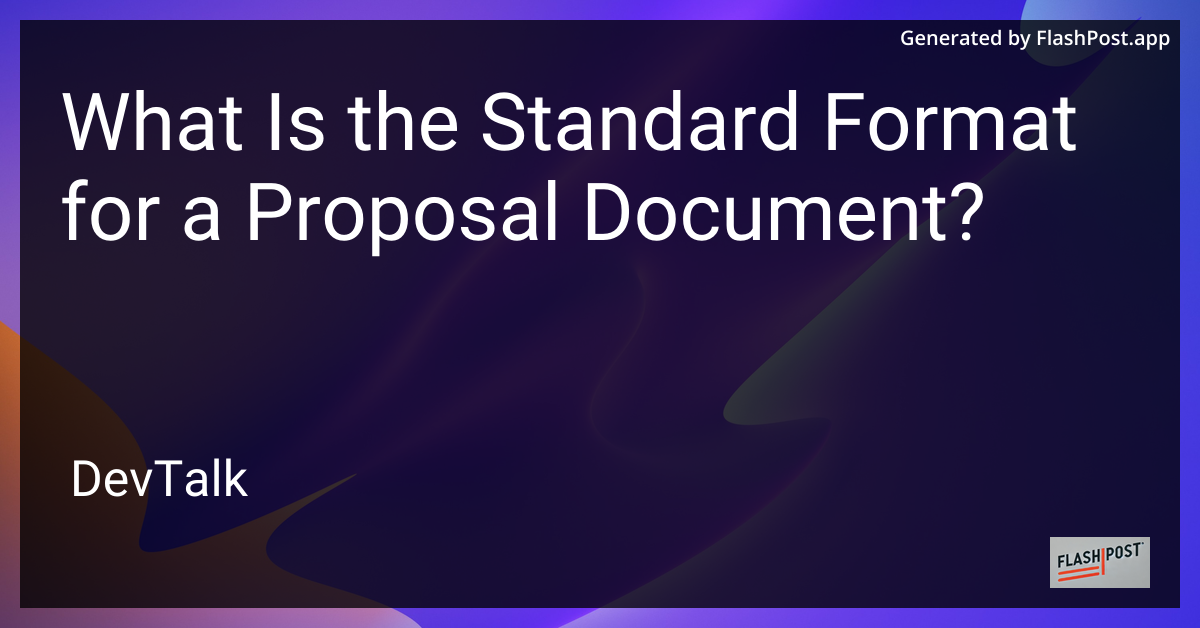What Is the Standard Format for a Proposal Document?
 # What is the Standard Format for a Proposal Document?
# What is the Standard Format for a Proposal Document?
In the realm of business and project management, a proposal document serves as a key tool for securing ventures and collaborations.
A well-structured proposal not only conveys your ideas effectively but also enhances your credibility with potential stakeholders. Understanding the standard format is crucial for crafting a persuasive document.
Key Components of a Proposal Document
A well-crafted proposal document typically consists of several key sections. While specific requirements may vary depending on the industry or purpose, the following elements are generally included:
1. Title Page
The title page sets the tone for your proposal. It usually contains:
- Title of the proposal.
- Name and contact details of the author(s).
- Date of submission.
- The intended recipient's name and designation.
2. Table of Contents
If your proposal runs several pages, including a table of contents helps the reader navigate your document easily.
3. Executive Summary
The executive summary gives a brief overview of the proposal’s main points. It should capture the reader’s interest and summarize:
- The purpose of the proposal.
- The problem or need.
- The proposed solution or project.
- Benefits of the proposal.
- A call to action.
4. Introduction
This section provides background information, sets the context, and clearly outlines the issue your proposal intends to address. It is critical to articulate the problem or opportunity accurately to justify the need for your proposal.
5. Problem Statement
The problem statement delves deeper into the issue highlighted in the introduction. It should identify the primary challenge that your proposal aims to solve, supported by data and evidence if possible.
6. Proposed Solution/Plan
Here, you outline your proposed strategy or solution. This includes:
- Detailed project description.
- Objectives and goals.
- Methodology or approach.
- Timeline and milestones.
This section should clearly convey how your solution addresses the problem outlined earlier.
7. Budget
Provide a detailed breakdown of the costs associated with your proposal. It's important to demonstrate a cost-effective approach while ensuring that all necessary expenses are accounted for. A transparent budget enhances credibility.
8. Conclusion
Conclude with a strong statement reiterating the benefits of your proposal and a call to action. Emphasize the positive outcomes and any competitive advantages of implementing your proposed solution.
9. Appendices and Supplements
Include additional information, charts, graphs, and supporting documents necessary to substantiate your proposal’s claims. These supplements help provide clarity and evidence to your proposal.
Related Resources
For more insights into writing effective proposals, you may find these resources helpful:
- Learn how to craft a compelling grant proposal cover letter to ensure your grant proposal stands out.
- Explore a comprehensive website proposal template for guidance on structuring an effective web design proposal.
- Discover tips on writing proposals efficiently in 2025 to streamline your proposal writing process.
Conclusion
Understanding and implementing the standard format for proposal documents is imperative to ensure clarity and effectiveness in your communication. By adhering to these guidelines, you can bolster your chances of successfully conveying your ideas and securing the support you need.